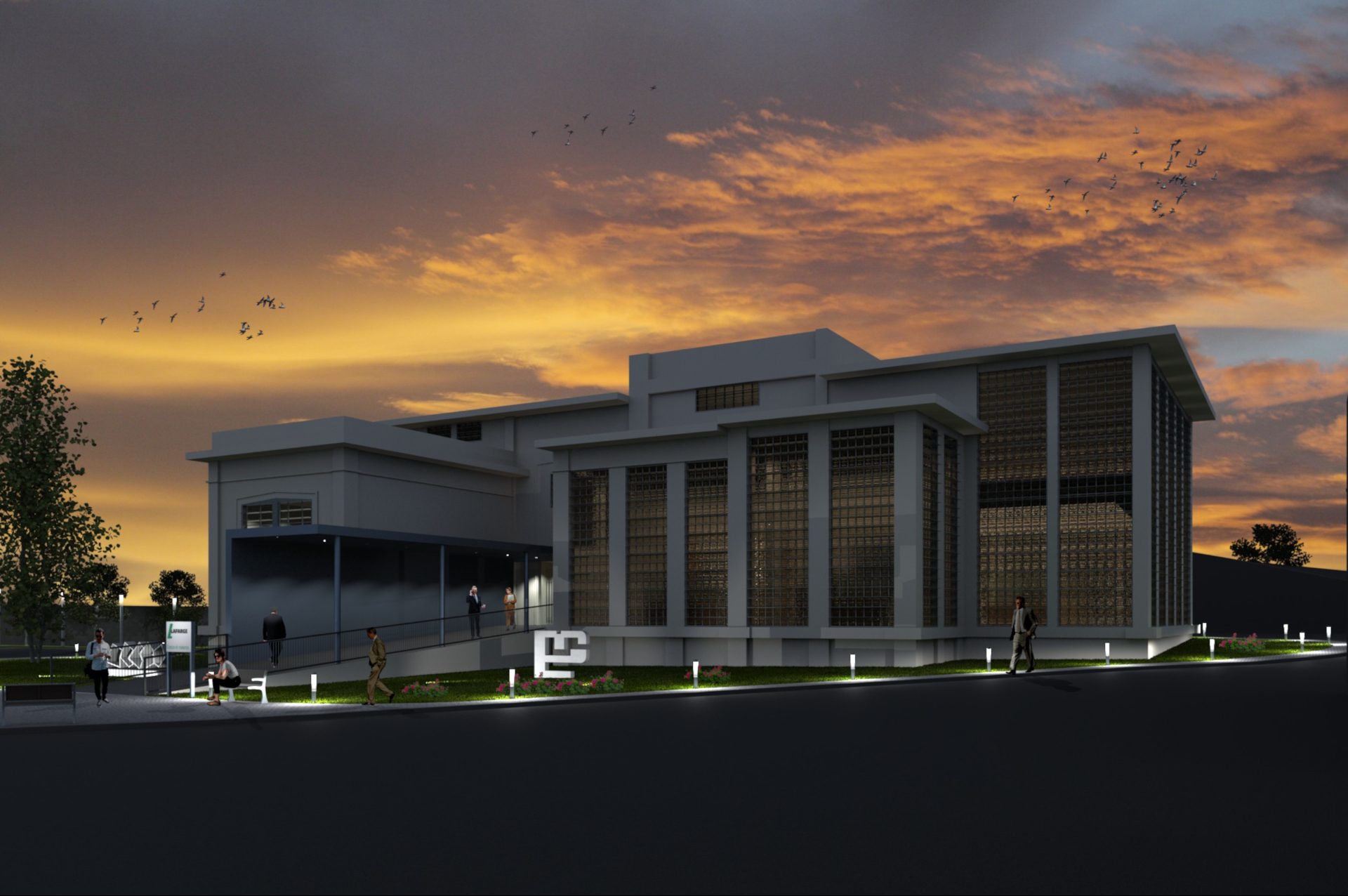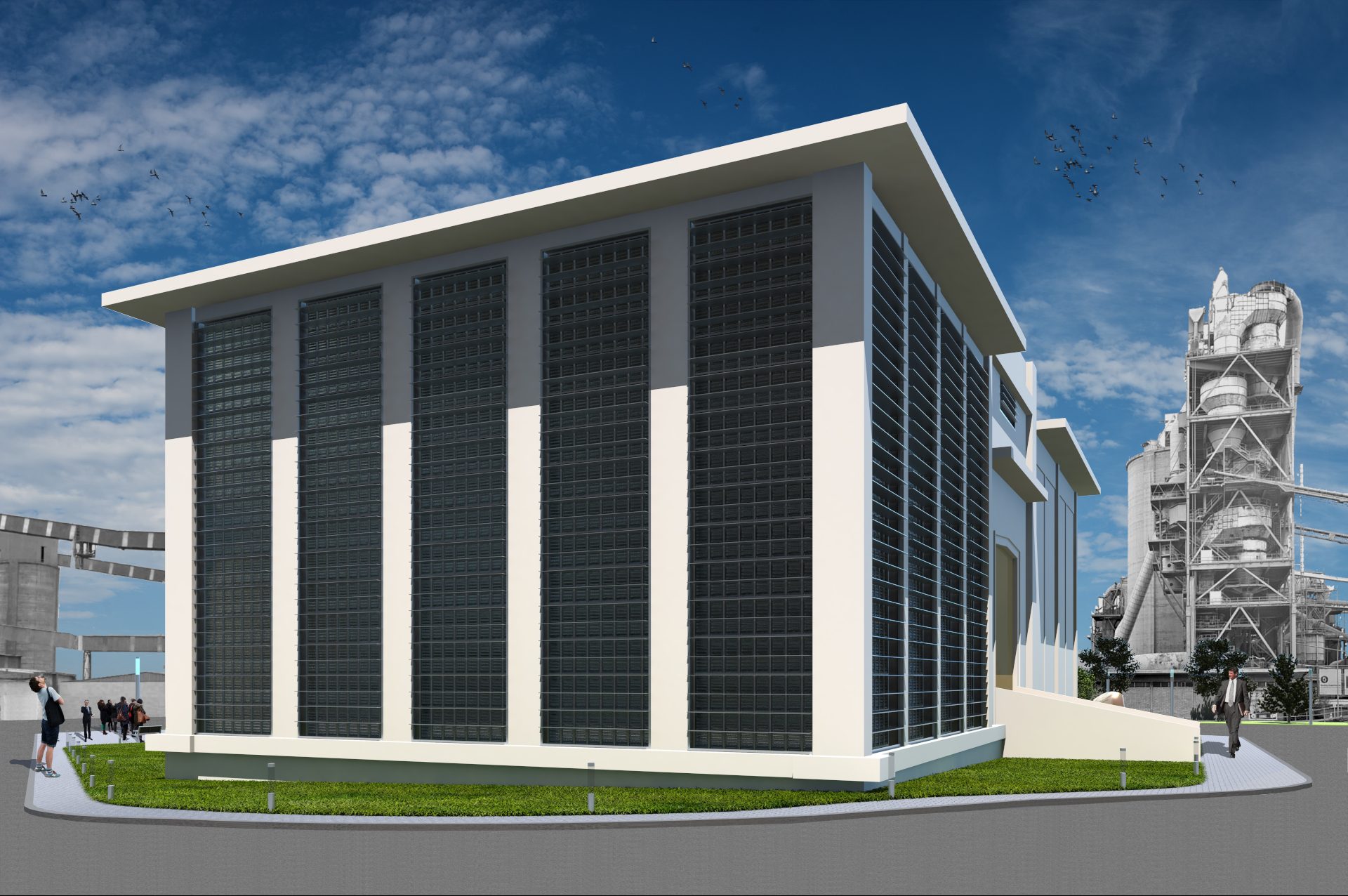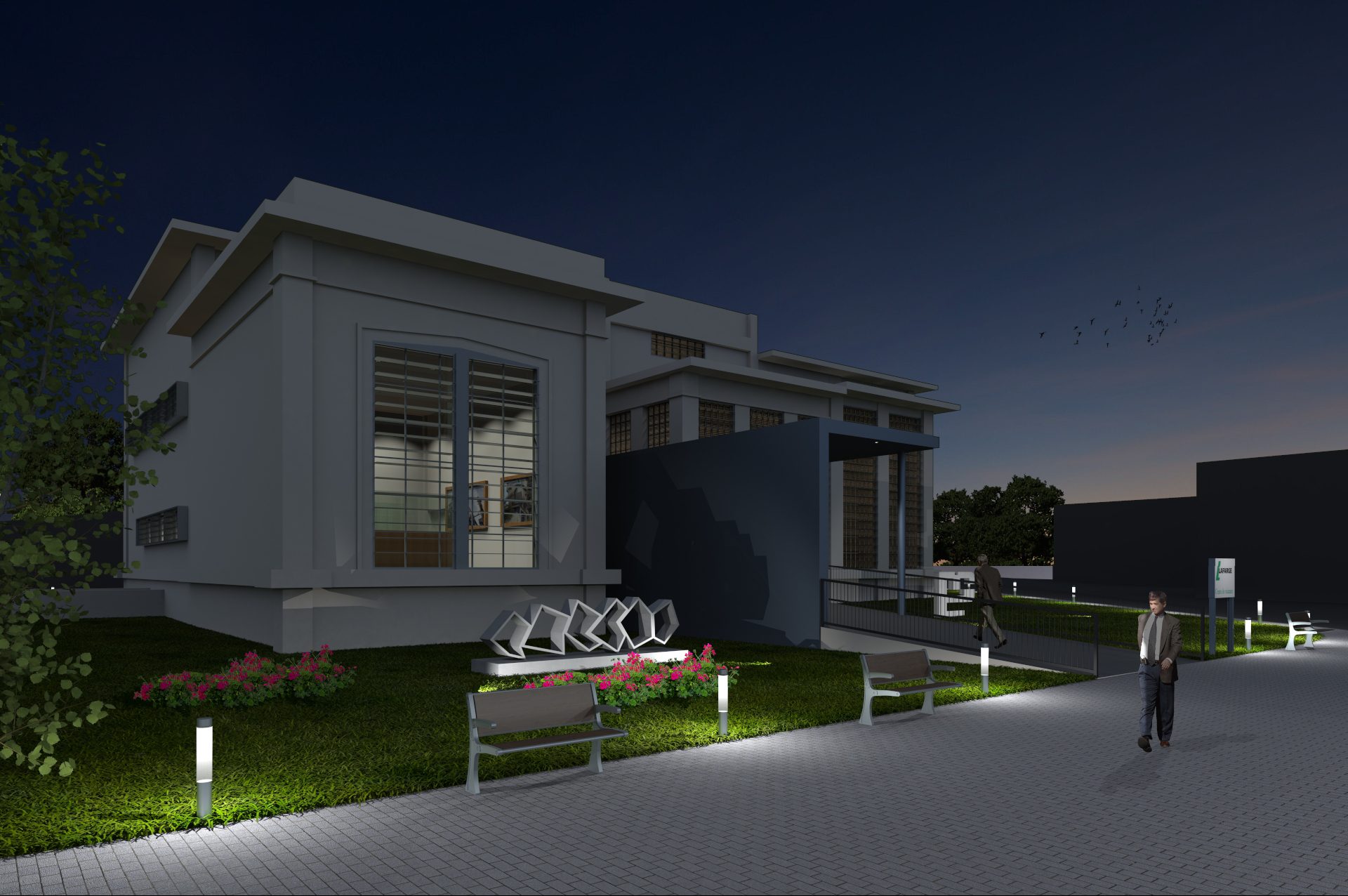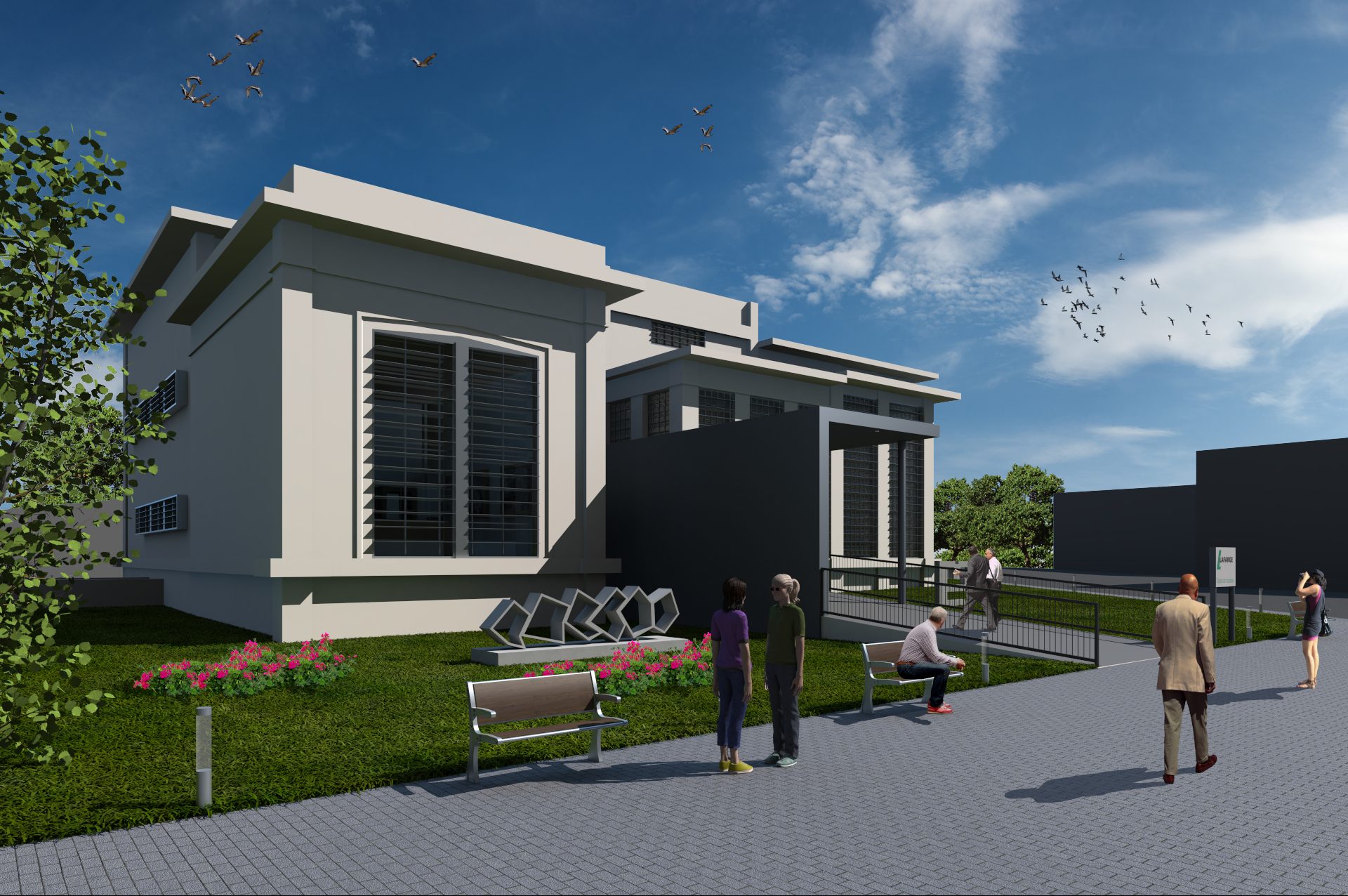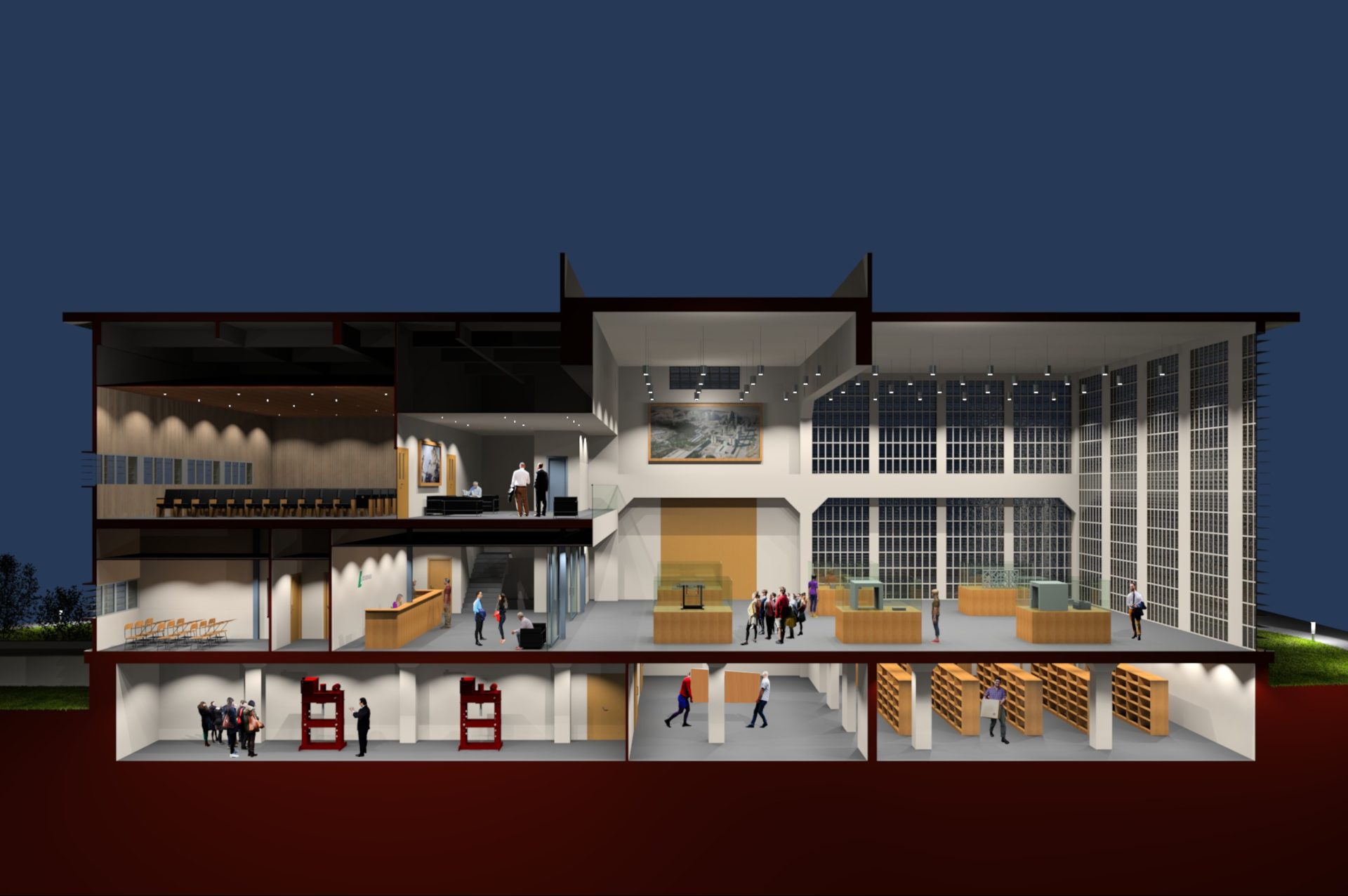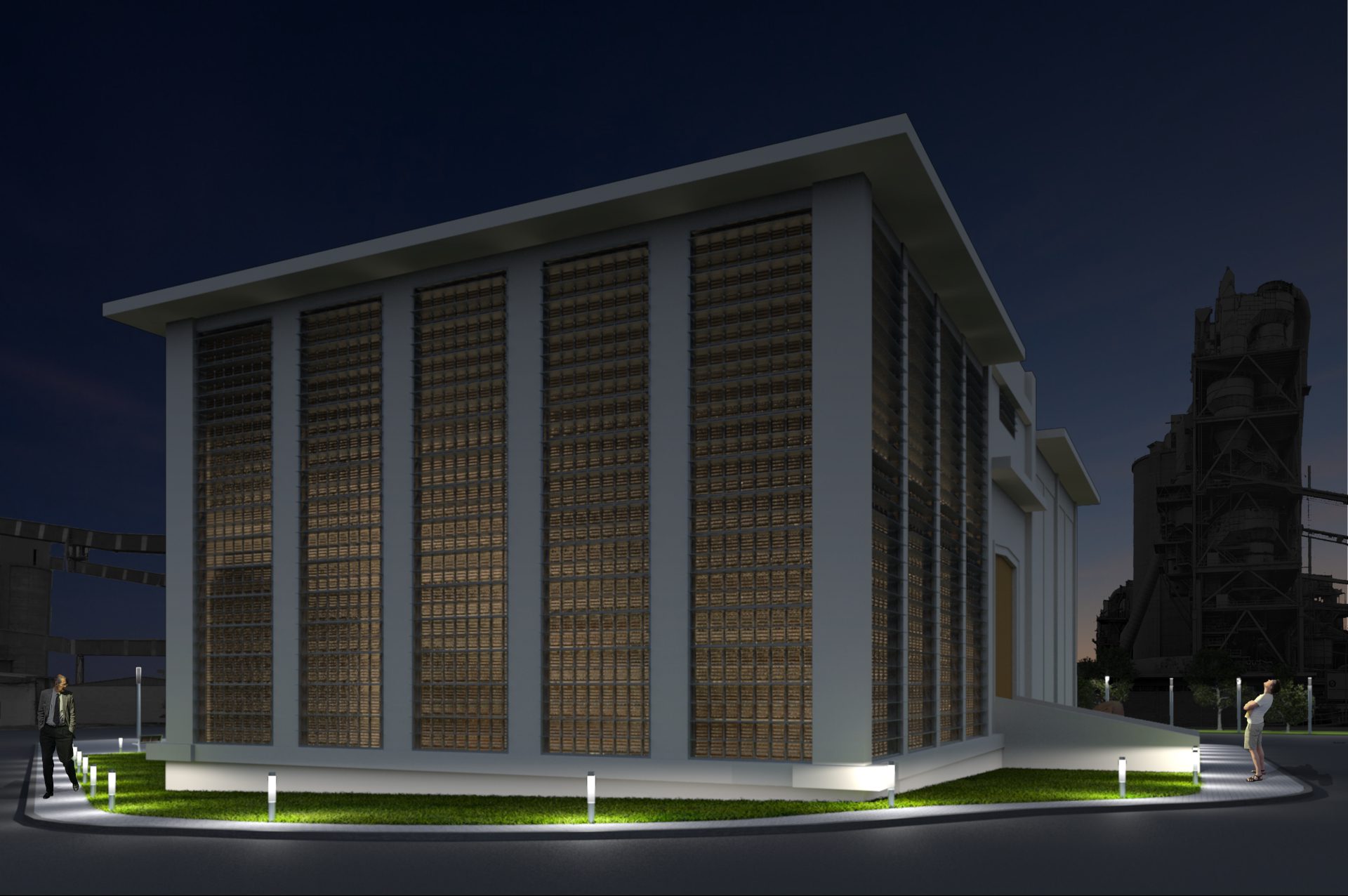The warehouse-5 of the cement factory Lafarge-Asland, of unknown author, is documented in the DOCOMOMO Ibérico Foundation as Spanish industrial architecture. Located in Villaluenga de Sagra municipality in Toledo (Spain), it is part of the cement factory built in 1925 by the company Asland, owned at the time by Count Güell. The Lafarge company, given the precarious state of the building and with the intention of preserving it, proposes a contest of ideas for the adaptation of the warehouse-5, in a visitor center of the factory with classrooms of learning, exhibition of products of the company and conference room among other spaces.
The project proposes given the low height of the basement for very large spaces, dedicate the basement as a warehouse, facilities and laboratories. On the upper floor, given the excessive height, a mezzanine to house the uses of classrooms and conference room, leaving the rest of the nave surrounded by pavés, as an exhibition area as a glass box.
ORIGINAL STATE






Imágenes cedidas por la entidad convocante.
PROJECT
Objective
The objective of the present project submitted to the competition is to adapt the building of the old warehouse 5 to its new use, respecting the essence and structure of the current building with a clear renovation, for distributive purposes of the spaces, in its light quality and energy efficiency .
Site
It is proposed to modify the current immediate environment to adapt it to the new use. In particular, it is proposed to change the entrance to the building, which is currently carried out through its southwest façade, to the northwest façade. For all this, a new site is created in this area, with a small parking area, which still emphasizes the new entrance to the building.
The entire building is surrounded by a sidewalk that defines its surroundings in a clear way, otherwise it would be blurred in the ground.
Between the aforementioned sidewalk and the building there is an area of grass, which can be occupied by different species of trees and plants. In this way it improves the appearance of the building giving it a unique category within the factory and also with regard to the views from the inside, especially from the learning classrooms and the conference room.
All accesses to the building are made by ramps, improving accessibility for people with reduced mobility who can visit the building.
The building has three access ramps: a pedestrian ramp for access to the main entrance; the access to the basement, for the access of vehicles with materials for temporary or other exhibitions, which is located in the northeast façade, where part of the lower points of the difference in the height of the ground with respect to the ground of the basement floor. Finally, the last access ramp is located on the southeast façade, which already exists today, and which is conditioned for the access of goods or very large volumes that can not be transported with the hoist from the basement to the exhibition plant. It is, therefore, an auxiliary entrance, only accessible for specific cases.
The main entrance is composed, in addition to the aforementioned ramp, by a structure type “L”, covered and closed on one side. The other side remains open with the only limit of a railing and the support pillars of the aforementioned structure. The composition of the aforementioned structure is to serve as a visual path for visitors who will foreseeably access the accesses next to the southwest façade where the aforementioned structure will clearly mark the access to the building.
The material that covers the entire access ramp has been thought to be covered with metal plates, emphasizing the uniqueness of the element with respect to the building and the indication that it belongs to a new element, added to the building.
Structure and enclosure
The structure of the building should remain largely unchanged. It would only be necessary to intervene in the areas where concrete deterioration is observed, repairing the affected areas as foreseen in the most detailed diagnosis that will have to be carried out.
However, for the new use it will be necessary to make some modifications in the structure. In the first place, the current access to the basement must be covered by a staircase of reduced dimensions, in a corner of the building, because it is not coherent with the new distribution of uses. The slab will be drilled in the area of the new lobby, in the space included within the pillars of the basement. In this space there will be a staircase that will connect all the floors and a lift-elevator that will connect all the floors. With this you get access to all floors, either by staircase or elevator, in a single space.
To achieve ample exhibition spaces we will have higher ceilings, a solution also applied in the conference room that needs a larger space, with higher ceilings. Conversely, for spaces intended for classrooms and toilets, which need smaller dimensions with lower ceilings, we choose to add one more floor to the ground floor.
To add one more floor and place the conference room in it, some pillars are added to the project that rest on the pillars of the basement, which follow a structure different from the structure of the rest of the building. These pillars have the sole mission of supporting the floor of the conference room, since the ceiling of the floor of the conference room is already supported by the current structure, achieving a totally transparent floor, which we use as a conference room and which we can project with a height according to its dimension in plan.
On the facades it is necessary to indicate that it is projected as far as possible to recreate the currently deteriorated cornices, for example in the access door of the southeast façade. The outgoing slab, which can be seen on the southwest façade, will also be recreated and will continue along the entire outline of the façade, whenever possible, to emphasize the base of the entire building. Therefore, the lands that are located next to the southeast and northeast façade will be extracted. It will be checked if there is said flooring overhang and it will be rehabilitated or recreated.
In the southwest façade, constituted by pavés, the entrance will be walled off, as it no longer makes sense with the new distribution and will be rehabilitated with the same type of pavés.
To avoid the excessive entrance of sunlight on the southeast, southwest and northwest facades, mostly composed of pavés, which can cause excessive luminosity in the interior and prevent quality observation of the exposed pieces, as well as excessive heating of said rooms , due to the solar radiation to which it is exposed, adjustable slats will be placed on its outer face. In this way it will be possible to regulate, independently for each façade, the necessary internal sunlight. Furthermore, since this second enclosure is composed of movable slats, these can be completely closed during the night to avoid heat losses during said hours, thus avoiding a supplementary contribution to heat said rooms on the following day. These slats would work like a second skin for the building. In winter these slats could be rotated in such a way that the sun penetrates inside the rooms heated part of the floor for a greater regulation of the interior temperature.
The learning classrooms and the conference room also have adjustable slats, but in these cases, in addition to the aforementioned improvements, they are designed to leave the room in the dark, in case you have to pass a projection, regulating in this way the amount of light that penetrates inside.
All the enclosures must be adapted to a given insulation, to reduce the energy losses of the building.
The entire façade will be chopped on the outside and plastered with a mortar with clear pigments, which will provide a continuous skin to the entire building and a uniformity throughout its façade.
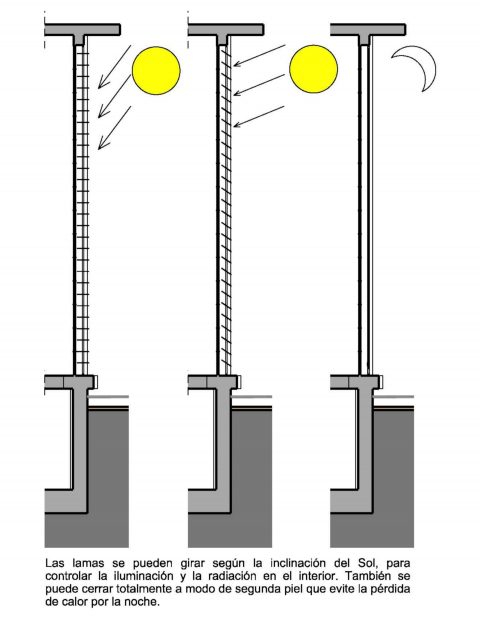
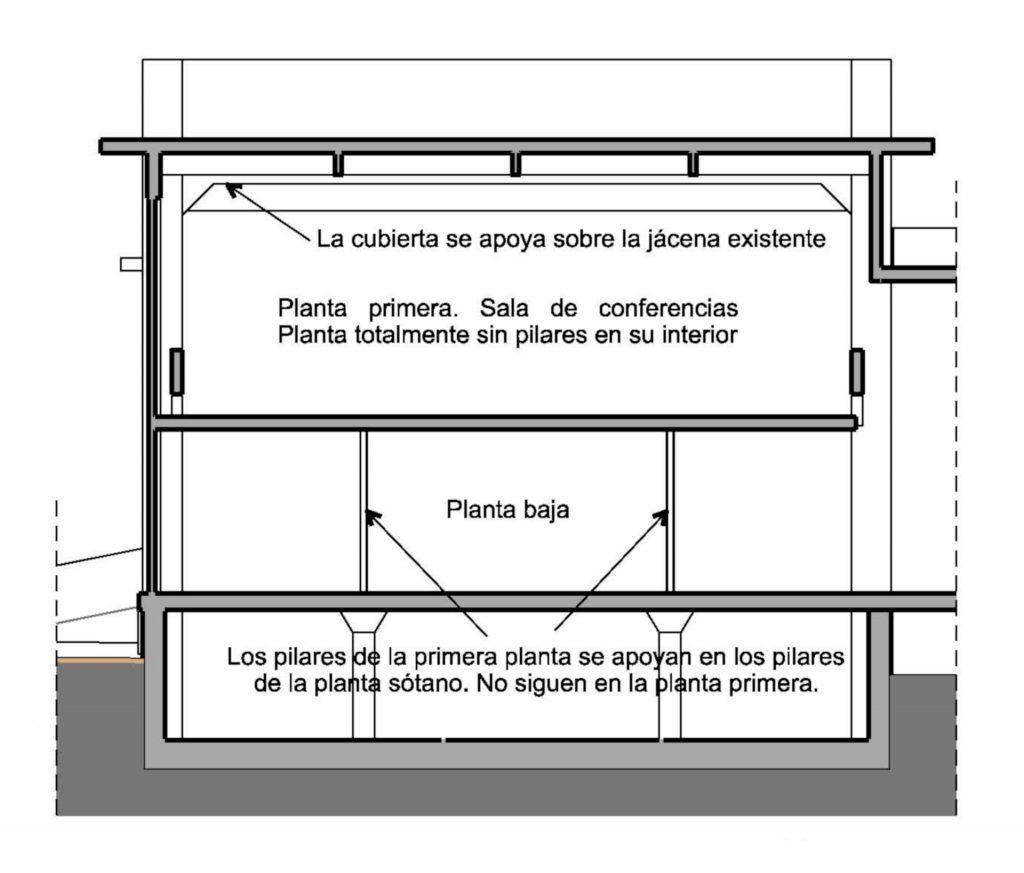
Interior distribution
The distribution of spaces has been divided into three floors. On the main floor, the visitor reception hall, the exhibition halls, the training rooms and the toilets have been located. On the first floor is the conference room and in the basement all the rooms that serve the upper floors: warehouse, reserve for facilities, area for unloading the exhibition material and changing rooms for the center’s staff.
Ground floor
The ground floor is accessible to the visitor from the access ramp, mentioned in point 2-Location. From there you reach the reception space. The reception space is separated from the outside by a double door to reduce energy losses. The visitor, according to his / her intentions, will be able to enter the factory’s museum room, located in one of the parts of the outgoing building of the main body. This room does not have direct communication with the forklift, since it is supposed to have less movement of materials. It is a permanent exhibition.
On the other side of the factory museum room, we have the Lafarge building solutions room. This room is designed for the exhibition of constructive solutions of Lafarge. It has an enclosure similar to the main room, composed of pavés. It has a communication door with the temporary exhibition hall and an auxiliary access from the lobby, when communication with the temporary exhibition hall is closed due to the assembly of a new exhibition. Eventually this exhibition hall may occupy part or all of the temporary exhibition hall if necessary.
The temporary exhibition hall has direct access from the lobby. Said access can be closed, said hall being isolated, when the temporary exhibition is assembled. The aforementioned room has communication via a forklift with the warehouse area. It also has an auxiliary door that allows the entry of goods or large-volume items that can not be transported by the forklift.
If the visitor’s objective is training, they can access the training area from the lobby. These classrooms are separated from the lobby by a corridor, to reduce the noise that may come from the lobby and that could hinder the correct functioning of the classrooms. In this plant are also the toilets of the center.
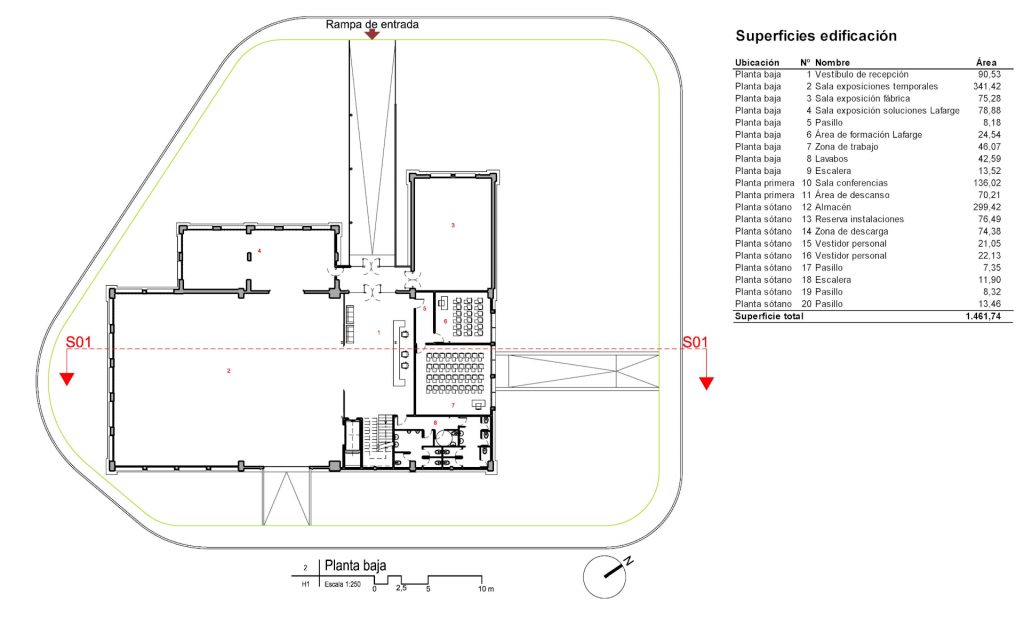
First floor
On the first floor, supported by a structure already explained in point 3-Structure and enclosure, we find a totally diaphanous floor distributed in the conference room, properly so called, and an intermediate space, prior to access to the conference room. This space is intended as a welcome space for conference attendees and as a meeting space during conference breaks. From this space you can see the temporary exhibition hall. The conference room has windows composed of louvred blinds, which can be closed completely if necessary to darken the room for the projection of a video, as indicated in previous points. People with reduced mobility can also access this plant through the elevator.
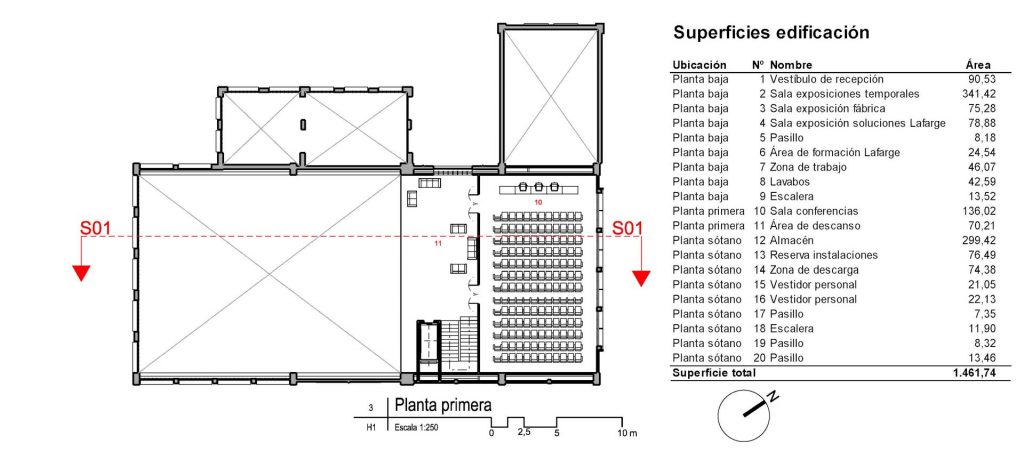
Basement floor
On this floor are the building’s warehouse, the unloading area, the reserve space for facilities and the changing room area for the center’s staff. To operate autonomously a new access will be enabled by drilling part of the basement wall to be able to access from the outside and allow the entry of vehicles. If the dimensions of the vehicle do not allow entry into the basement, it can be unloaded outside and the exhibition materials can be entered by manual or mechanical means, without interfering with the center’s own activity, until the day of the assembly of the exhibition .

